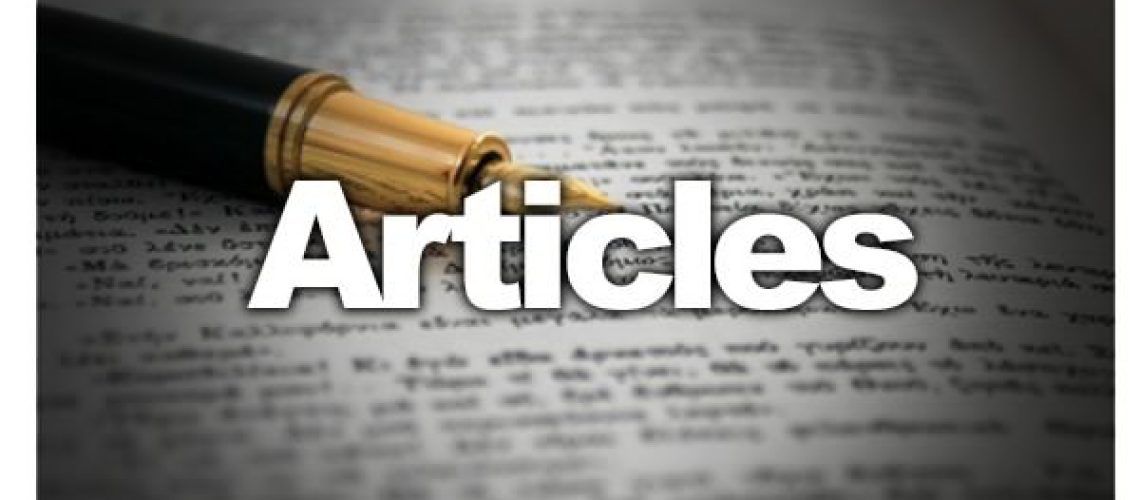By Amrita Ghosh
Articles play an important role in the way sentences are framed. There exist myriad variations in their usage across languages. Let us have a quick look at how articles function within the English language.
Note that the rules discussed in here are the ones which are generally applicable. There exist certain exceptions which have to be dealt with on a case to case basis.
What is the role of an article in English grammar?
Articles are words which are used to provide specificity to nouns or noun phrases. As a result articles are placed before nouns and noun phrases in sentences.
Note: Noun phrases are group of words which include a head noun and its modifiers. Modifiers are words which cause an addition or restriction in the meaning of other words with whom they are used. Noun phrases perform the functions of a noun in a sentence.
For instance, in the sentence ‘The blue dress is pretty’, the words ‘blue dress’ constitute a noun phrase.
What are the different types of articles in English?
The English language has two types of articles.
- Definite articles: ‘the‘ is the only definite article which exists within the English language.
- Indefinite articles: There are two indefinite articles which are used in English. They are ‘a’ and ‘an’.
Differences between definite and indefinite articles
The key differences between definite and indefinite articles are:
| Type of difference | Definite articles | Indefinite articles |
| Level of specificity | ‘The’ is used before nouns when the author assumes that the reader knows what is being spoken about.
‘The’ is often used in the second instance i.e. after something has already been referred to previously. It is also commonly used in cases where the person or object being referred to is unique and thus easily identifiable. |
‘A’ and ‘an’ are used before nouns when the author wants to make a general reference to someone or something.
It is usually used when the person or thing that is spoken about has not been mentioned before. They help in introducing the thing or person to the reader. |
| Usage before nouns | ‘The’ can be used before both singular and plural nouns.
Eg. 1. The dog was barking. 2. The children are studying. In the first sentence ‘the’ is used before the singular noun ‘dog’. In the second sentence ‘the’ is used before the plural noun ‘children’. Both are accepted usages. |
‘A’ and ‘an’ can be used only before singular nouns.
Eg. 1. I saw a cat this morning. 2. I ate a bananas for breakfast. In the first sentence ‘a’ is used before the singular noun ‘cat’. This is a correct usage. In the second sentence ‘a’ is used before the plural noun ‘bananas’. This is an incorrect usage. |
| Types of words they precede | ‘The’ is used before words which begin with a consonant.
Eg. The phone was ringing. In this sentence ‘the’ precedes the noun ‘phone’. The word ‘phone’ begins with the letter ‘p’ which is a consonant, |
Indefinite articles can be used before words which begin with consonants as well as vowels. |
Keep in mind…
The difference between use of ‘a’ and ‘an’: ‘A’ is used before words which begin with consonants. ‘An’ is used before words which begin with a vowel or vowel sound.
Eg. 1. She gave me a pen.
2. I want to eat an orange.
3. Your behaviour is not befitting of an heir.
In the first sentence ‘a’ precedes the word ‘pen’. ‘Pen’ begins with the letter ‘p’ which is a consonant.
In the second sentence ‘an’ precedes the word ‘orange’. ‘Orange’ begins with the letter ‘o’ which is a vowel.
In the third sentence ‘an’ precedes the word ‘heir’. Although ‘heir’ begins with the consonant ‘h’, it starts with a vowel sound (pronounced as ‘air’).
Types of questions that you can expect
Word selection questions in the CLAT exam often seek to test your grasp over articles. You will get a lot of guidance for the clat examination from our experts regarding word selection. If you’re opting for the online coaching classes for clat we will give you exactly the same guidance.
In such questions you are expected to fill the blank space within an isolated sentence or composite paragraph with the correct article. You need to be thorough about the different usages of a, an, and the in order to tackle such questions efficiently.





